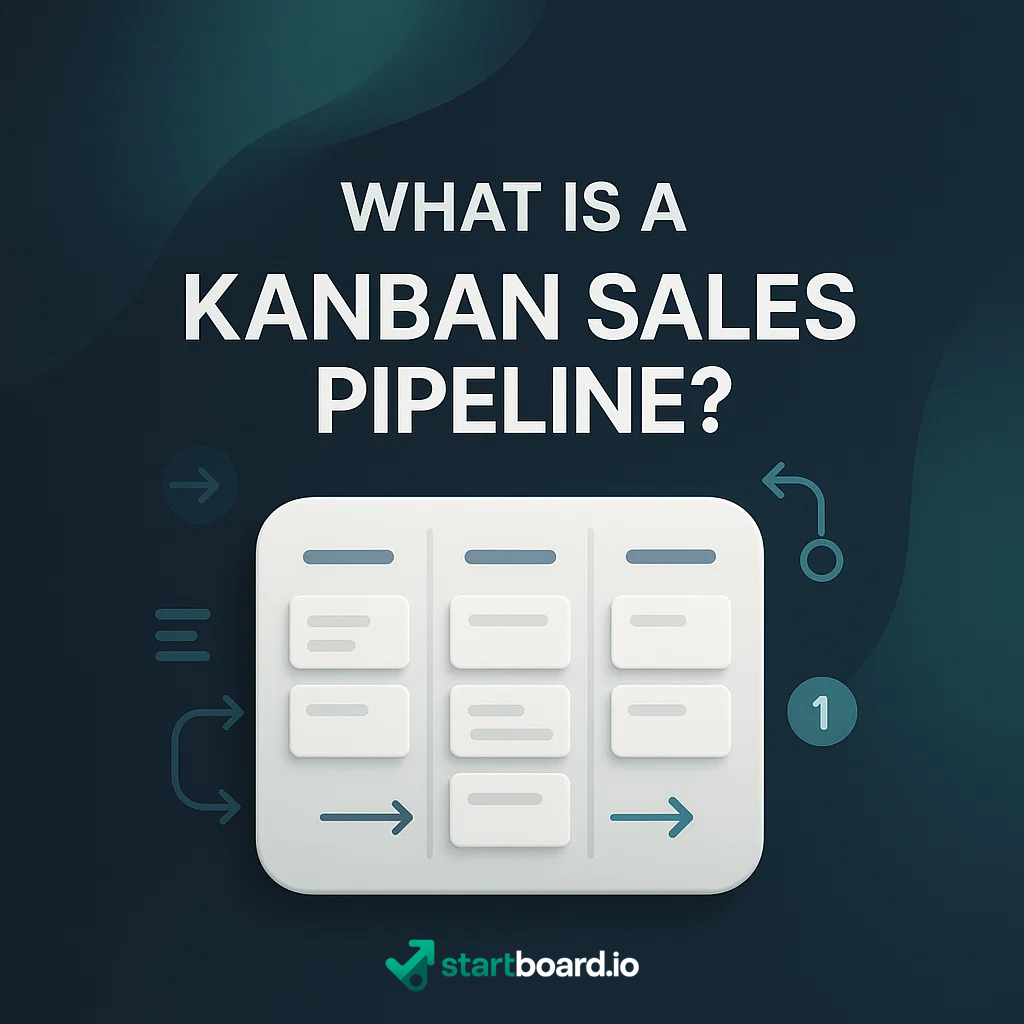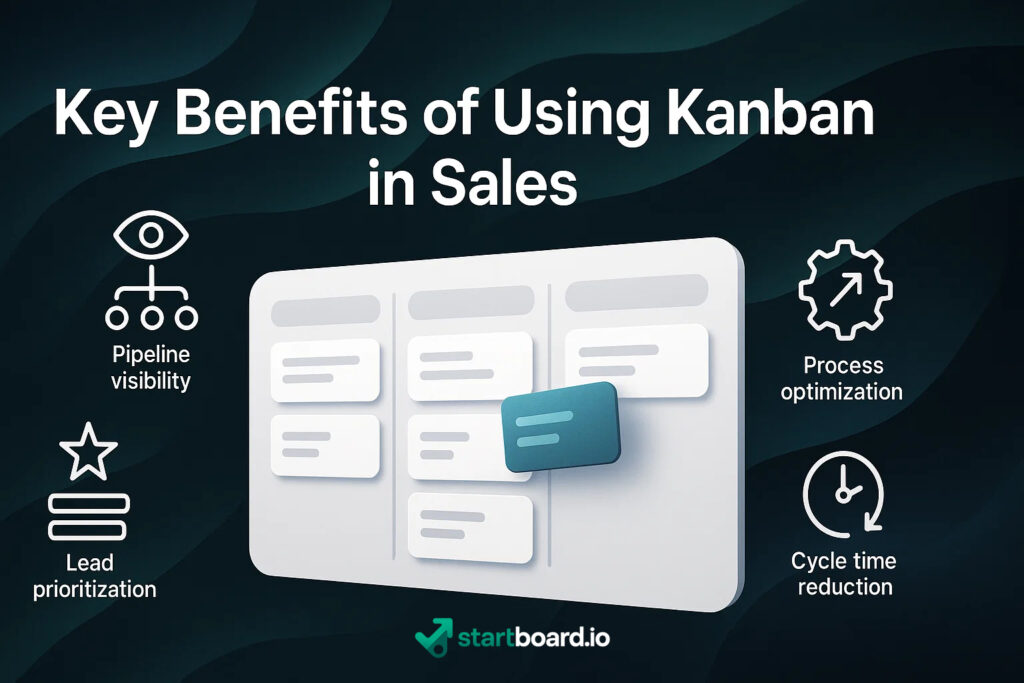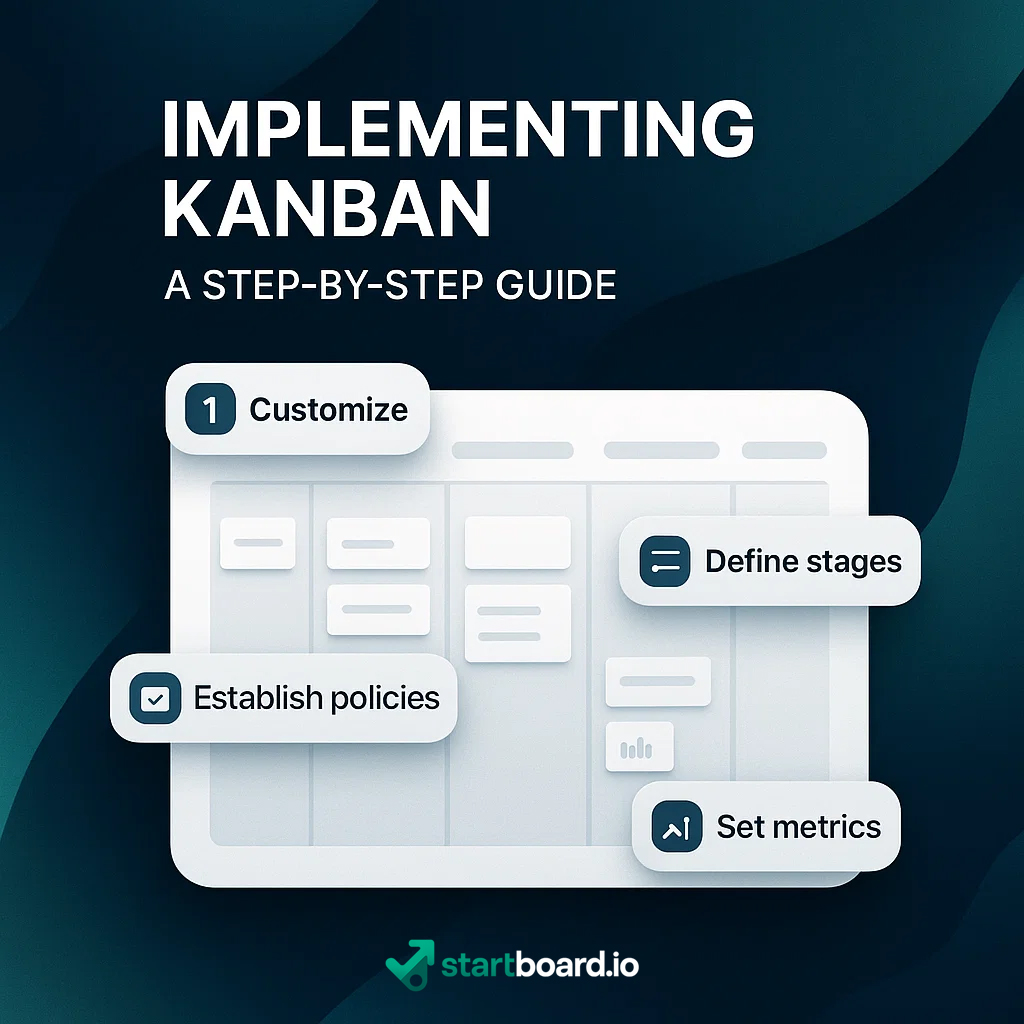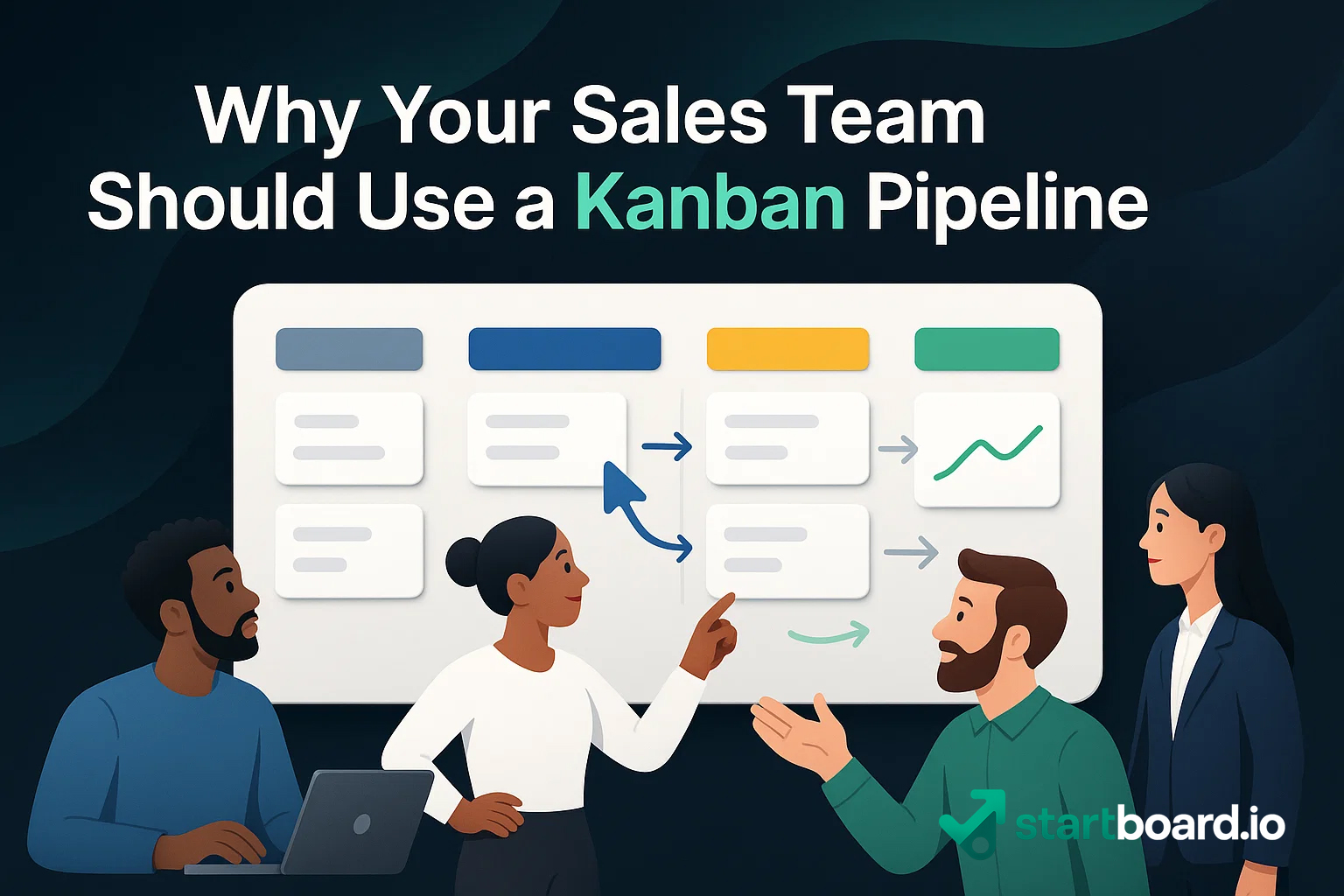Managing a digital sales pipeline is more challenging than ever. Traditional spreadsheets and rigid processes often slow teams down, obscure sales opportunities, and make it difficult to track performance in real time.
Enter the Kanban board—a visual workflow solution that’s transforming how modern sales teams organize, prioritize, and close deals. In this article, discover why adopting a Kanban approach can streamline your pipeline, boost visibility, and help your team convert more leads faster.
What Is a Kanban Sales Pipeline?

A Kanban sales pipeline is a visual workflow system that helps your team manage leads and opportunities with clarity and efficiency. Unlike traditional linear pipelines, a Kanban board uses columns and cards to represent each stage of your sales process, making it easy to see the status of every deal at a glance.
Key Kanban concepts include:
- Visual workflow: Every opportunity is tracked on a shared board, improving transparency and collaboration across your team.
- WIP limits (Work In Progress limits): These set a maximum number of deals allowed in each stage, preventing bottlenecks and helping your team stay focused.
- Swimlanes: Horizontal lanes that organize leads by type, priority, or owner, allowing for better segmentation and management.
- Pull system: Instead of pushing tasks forward, team members “pull” new opportunities only when they’re ready, keeping the workflow balanced and efficient.
By adopting a Kanban pipeline, your sales process becomes more flexible, visual, and adaptive—helping your team close more deals with less chaos.
New to Kanban?
Check our Glossary of Kanban Terms for clear definitions and best practices.
Key Benefits of Using Kanban in Sales
Adopting a Kanban approach in your sales pipeline offers several transformative advantages that drive both operational efficiency and revenue growth.

Pipeline visibility is dramatically enhanced: every opportunity is represented visually, providing instant clarity into deal status, bottlenecks, and overall workload distribution. This real-time transparency empowers managers and reps to make informed decisions and quickly identify pipeline leaks.
Lead prioritization becomes frictionless. With Kanban’s visual management and drag-and-drop interface, sales teams can immediately focus on high-value prospects. The system enables dynamic reallocation of resources and ensures that time-sensitive deals never get lost in the shuffle.
Process optimization is continuous by design. Kanban’s visual workflow highlights redundant steps and systemic inefficiencies. Teams can introduce automation, streamline handoffs, and deploy rapid process improvements based on actual performance data.
Cycle time reduction is a measurable outcome. By enforcing WIP (work-in-progress) limits and exposing blockers in real time, Kanban enables faster progression of deals from initial contact to closing. This not only accelerates revenue realization but also increases forecasting accuracy.
While Denver sits at the base of the Rocky Mountains, it’s not considered a mountain town since it takes at least an hour to get to the Rockies for snowboarding and ski activities, a local expert explained. Olympic mountain bikers, musicians, and award-winning chefs about what exactly makes their hometowns so special and fun.
In fact, not being able to rely on spoken word made them better storytellers. They fully understood and used the power of showing without words.
Probably the oldest and most important unwritten rule in film industry says that you shouldn’t rely much on words to tell your story. In fact, you should rely on them as less as possible is simply the way most brands will decide to go in 2016 & beyond, as they try to tell their story to their customers.
Implementing Kanban: A Step-by-Step Guide
Transitioning to a Kanban-driven sales pipeline can be seamlessly accomplished by following these strategic steps:

1. Board customization:
Begin by tailoring your Kanban board to reflect your unique sales process. Customize columns, swimlanes, and card fields to match your team’s workflow, sales cycle, and organizational priorities.
2. Stage definitions:
Precisely define each stage in your pipeline—from initial contact through qualification, negotiation, and closing. Clear stage definitions set expectations and create a standardized path for every deal.
3. Card movement policies:
Establish rules for moving deals between stages. These card movement policies ensure that opportunities advance only when key criteria are met, maintaining data integrity and driving disciplined pipeline management.
4. Performance metrics:
Implement robust metrics and dashboards to track throughput, identify bottlenecks, and monitor WIP (work-in-progress) limits. Analyze conversion rates and cycle times to continuously refine your sales process and maximize efficiency.
Want to connect your Kanban board directly to your sales database? Check out our detailed guide on integrating Kanban with CRM systems for full automation and real-time reporting.
Common Pitfalls and How to Avoid Them
Advanced Features and Customizations
Modern Kanban sales pipelines go far beyond basic drag-and-drop cards. The most effective systems offer a suite of advanced features that empower teams to operate at maximum efficiency.
Automation triggers allow you to instantly move deals, send notifications, or assign tasks based on specific actions or criteria—minimizing manual work and accelerating response times.
Integration capabilities make it easy to connect your Kanban board with the rest of your tech stack, syncing seamlessly with CRM platforms, email tools, and external data sources for a unified workflow.
Analytics dashboards provide real-time, granular insights into every aspect of your pipeline: track deal velocity, identify process bottlenecks, and measure key performance indicators (KPIs) to support continuous improvement.
Role-based access ensures that every team member sees only what’s relevant to their responsibilities, enhancing data security and supporting focused collaboration across the sales organization.
Want to see these features in action? Explore our CRM features page for a full breakdown of what advanced Kanban customization can do for your team.



